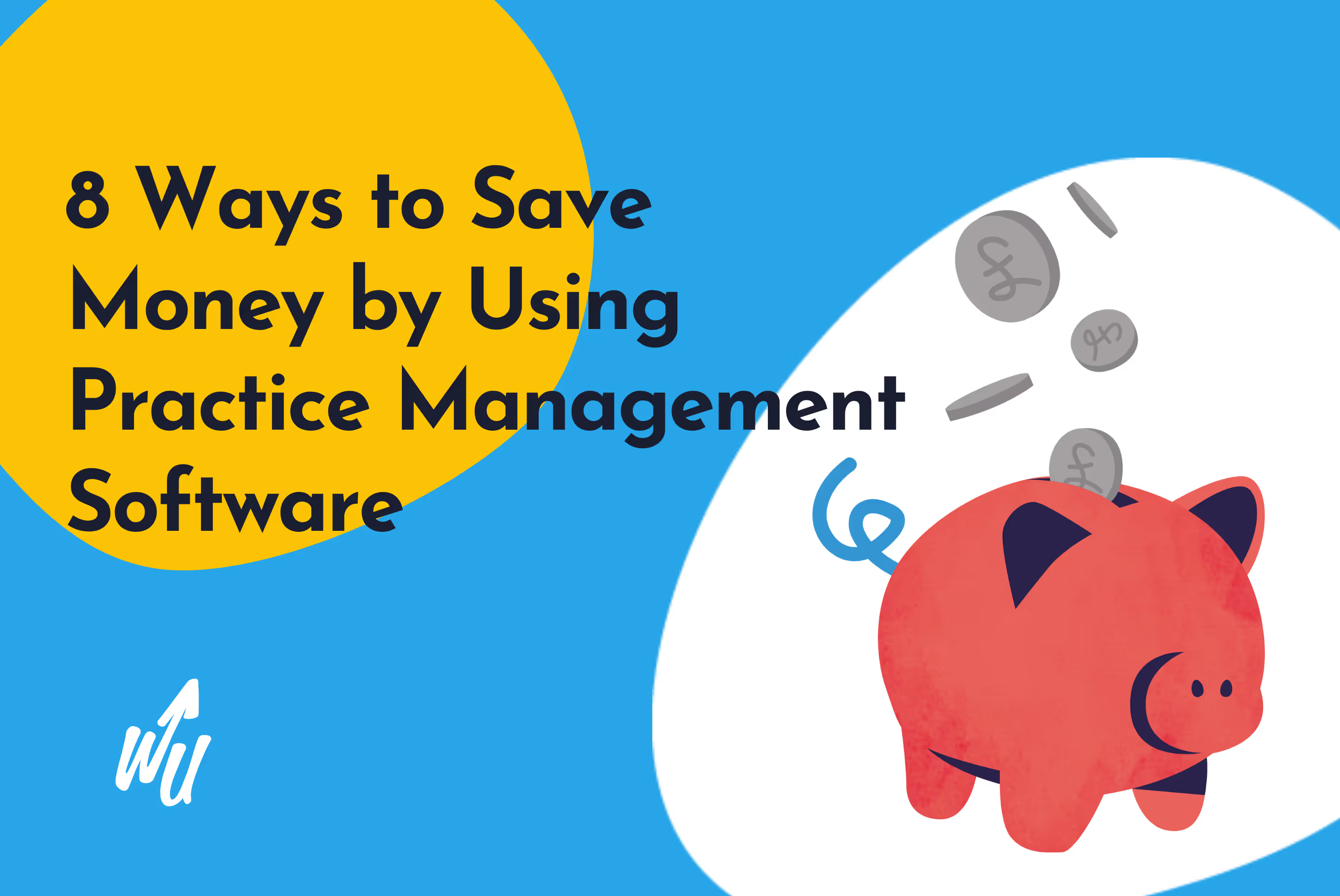For many therapists, it can be really difficult to set session rates and discuss them confidently with clients.
But it’s important to remember that private practice clinicians are business owners.
There are expenses, taxes, ongoing training requirements, quieter times, sick days, holidays, and even retirement to plan for!
Plus, you’ll never be able to see clients for 100% of your working time because, as a business owner, you have other tasks that you need to attend to.
Find a financially happy place for your practice by using our Treatment Fees Calculator to find out how much you should charge:
If you aren’t sure what to enter into each of the calculator’s fields, don’t worry. This article discusses the main approaches to help you set (and maintain) your pricing.
We’ll set your own lifestyle goals, assess your monthly expenses, and determine a session fee that would allow you to meet your goals and cover your expenses.
Let’s get started!
1. Set your personal income goals
The first step is to set session fees to determine your financial goals for your personal life.
How do you envision your ideal lifestyle?
Goals don't have to be ambitious - maybe you want to attend a few extra yoga classes a week or go out to eat once a month.
When arriving at your pre-tax annual income goal, consider any financial goals that are important to you.
Establishing clear financial goals helps you set an objective for your professional aspirations.
Owning your own practice means your business revenue becomes your own personal income - how much money your business makes directly impacts how much money you get to keep.
Having this in place can ensure that your therapy business delivers the income that you need to achieve your goals and objectives.
If you are worried about this on a regular basis, it may negatively impact your therapy work and overall well-being.
2. Set your ideal lifestyle goals
The next step is to consider your lifestyle goals. Dream big!
These goals differ from your financial lifestyle goals because these goals cannot be priced: spending time with your kids, learning new therapy techniques, maintaining your own positive mental health, to name just a few.
These are goals that are important to you because they enable you to live the life you want - and these dreams form the pillars of your private practice.
Decide these things to match your dream lifestyle to the practicality of fee setting:
- How many clients would you like to see each day? Consider your own limitations, as well as obligations outside of private practice that may limit the number of sessions you can reasonably hold.
- How many weeks of holiday do you want to take each year? It is important to remember that too much work, not enough down time, and a limited amount of quality time with loved ones can lead to professional burnout!
3. Calculate your monthly expenses
Now it’s time to calculate your monthly expenses.
Accounting may make many therapists run for the hills, but it is an essential part of running your own business.
Calculate your monthly expenses by including these categories:
- Rent: How much are you paying for your office(s) each month?
- Marketing: Promoting your business through advertising to gain more clients. Advertising on Google Ads or social media, creating your own website, joining professional communities, and joining online therapist directories are all options.
- Practice management software: Your monthly subscription to a clinic management system which will streamline your billing, scheduling, admin, etc. Some therapists hire staff to manage the admin side of the practice, though it is cheaper to utilise software for this.
- Liability insurance: A must in many fields, including private practice.
- CPD costs: Courses and conferences you attend in order to increase your knowledge, gain new skills, and maintain your licence. This includes supervision or peer supervision groups.
You'll have a good idea of how much it costs you to keep your private practice running once you've assessed all expenses.
4. Account for your no-show rate
Consider what your no-show rate is – that is, how many clients each week don’t turn up for their sessions.
This is important to account for because you cannot bill for the hour if the cancellation is outside the cancellation fee window.
Take this into account when calculating how many sessions you actually have per week – and it will affect how much to charge each session (i.e. a high no-show rate means needing more income to meet your financial goals).
If no-shows are a problem for you and your practice, you can also take steps to reduce them.
When you schedule an appointment for a client, your diary management system can send them an appointment confirmation email or SMS.
You can also send out a reminder email or SMS within a few days of the appointment so they don't forget.
5. Check out the market
As you consider your goals and expenses at a personal level, it's also important to consider the market and find out what the going rate for your therapy services is.
Take a look at what your peers/competitors are charging in your local area to get an idea of what the market rate is.
Don’t feel bad about doing this!
They are likely to be checking your rates on an ongoing basis and it’s a perfectly valid approach used across a whole host of industries.
One major factor to consider is the average cost of therapy in your area. Knowing that figure will give you a sense of how your rates compare to those of your peers!
You might also consider the amount of experience and specialisation you bring to the table.
If you’ve worked in your field for a long period of time, you may feel empowered to charge more; let’s be honest, you’ve earned it!
Similarly, you might also consider charging more if you specialise in a certain diagnosis or type of therapy. These may include unique certifications, extra courses, or postgraduate internship experiences.
If you are providing a service to clients that your peers cannot, that is worth additional value.
When you go through this exercise keep in mind “utilisation”. Utilisation is the % of available (billable) time that you spend with fee-paying clients.
For example, if you have the capacity to work 30 hours per week but only see clients for 15 hours per week your utilisation is 50%.
The market rate might average out at £50/hour but there might be an outlier at £100/hour. There could be a whole host of reasons for this but a probable cause is that they are only 50% utilised (because of their high price) and as a result, their effective income is £50/hour, which would put it more in line with the market rate.
Everyone’s preferences are different, so it's important to consider whether you might prefer to work with more clients at a relatively lower rate, or fewer clients at a higher rate, and how quickly you need or want to fill your client caseload.
Your goal in this phase is to compare your practice to other clinicians who share your location, level of experience, and level of specialisation, and then consider if you may be undercharging or overcharging in relation to your peers.
6. Calculation time!
After you've considered the various aspects of your private practice, you're ready to do some calculations!
You’ll need to jot down the following:
- How much net income do you need from your practice per year?
- How many hours per day do you want to work?
- How many weeks of holiday do you need?
- Do you want to work weekends?
- What are your overheads?
When you have these numbers, use our treatment fee calculator to see exactly what your sessions should cost:
You now have a recommended cost-per-session based on lifestyle goals and practice expenses - congratulations!
Before you finalise your treatment fees, consider these additional factors:
- Sliding Scale
Calculating your average session fee is the goal of the Treatment Fee Calculator, not necessarily what every client will pay.
Consider offering clients with varying financial situations a sliding scale option.
You may reach out to a larger base of prospective clients if you indicate that you accept sliding scale payments, but you may also set the expectation that your fees are negotiable.
Standardising your rates, based on client income, will enable you to avoid the awkward discussion with prospective clients about whether or not you can accommodate their proposed prices.
Although offering sliding scale payment options helps you reach more people who need help, it may also decrease your income over time.
- Take advantage of every bite!
As soon as you have an understanding of your rates and referrals, you need to focus on turning those initial contacts into long-term client relationships.
One client visiting you weekly at £50 per session could earn you over £2,500 per year!
There is no guarantee that every referral will become a client; but, when you attach a potential value to every referral, it becomes even more important to offer an outstanding intake process.
Answering emails promptly and professionally and being open in communication are great first steps towards creating a long-lasting relationship with a client. Consider using a clinic management system to help automate this for you, so you never miss a confirmation or reminder email.
Offering a great video consultation is often key to bringing on new clients, since it gives them a sense of what it might be like to work with you in person and provides you with an opportunity to explain what makes your practice unique.
Conclusion
Following these steps and considering your worth is important not only for the longevity and success of your private practice, but also for your emotional well-being as the therapist and business owner.
Keeping in mind that it’s a competitive field and it pays off to be strategic about your fees, remember that you deserve to earn money from the services you provide.
If your expertise is highly specialised, you have a long waiting list or limited capacity, you obviously have the option to bump your rates. For some, this may present something of a moral dilemma.
Conversely, if demand is low you have the option to lower prices but if you are genuinely running your practice as a business there will come a point where this no longer fulfils your financial objectives and is no longer viable.
About WriteUpp
WriteUpp is a cloud-based, practice management system for health and wellbeing professionals.
It is GDPR compliant and ISO27001 registered, and features a whole host of time-saving features that you can take advantage of.
Free up “wasted time” so that you can spend more time with your existing clients, take on new clients and generate more income or just enjoy more down-time away from your practice.
Got any questions?
If you have any questions, or just want to chat to us about what an integrated practice management solution could do for you and your practice, just grab us for a live chat.
The button is just there in the bottom right corner of your screen.
FAQs
How do I determine the right fee for my private practice services?
Determining the right fee for your private practice services involves several steps. First, research the standard rates in your area by looking at what other practitioners with similar qualifications and experience are charging. Consider the cost of living in your area and your target market's ability to pay. Factor in your qualifications, experience, and any specialised services you offer. Calculate your desired annual income and work backward to determine your hourly rate, considering your expected number of billable hours.
What personal and lifestyle goals should I consider when setting my income targets?
When setting your income targets, consider your personal and lifestyle goals, such as desired work-life balance, savings goals, retirement planning, and any major future expenses like buying a house or funding education. Reflect on your personal values and priorities, including how much time you want to dedicate to work versus personal activities and family time. Ensure your income targets align with these goals to achieve a fulfilling and sustainable career in private practice.
What are the essential monthly expenses I need to account for in my private practice?
Essential monthly expenses in a private practice include rent or mortgage payments for your office space, utilities, professional liability insurance, office supplies, marketing and advertising costs, and software subscriptions for practice management and electronic health records. Additionally, account for administrative support staff salaries, professional development costs, and any other recurring expenses specific to your practice. It’s crucial to have a detailed budget to manage these expenses effectively.
How does the no-show rate affect my overall revenue?
The no-show rate significantly impacts your overall revenue as it represents lost income from missed appointments. High no-show rates can lead to a substantial decrease in your expected earnings, disrupting cash flow and financial stability. To mitigate this impact, it’s important to track your no-show rate, implement policies to reduce it, and adjust your scheduling practices accordingly to minimise revenue loss.
What are effective strategies to minimize patient no-shows?
Effective strategies to minimize patient no-shows include implementing reminder systems through calls, texts, or emails a few days before the appointment. Establish a clear cancellation policy and communicate it to your patients, possibly including fees for last-minute cancellations or no-shows. Offer flexible scheduling options and consider overbooking slightly to compensate for potential no-shows. Building strong relationships with your patients and ensuring they understand the importance of keeping appointments can also reduce no-show rates.
How can I ensure my fees are competitive with the market rates?
To ensure your fees are competitive with market rates, regularly conduct market research to stay updated on the current pricing trends in your area. Join professional associations and networks to gain insights into standard rates within your industry. Adjust your fees periodically based on changes in the market, inflation, and your growing experience and qualifications. Offering exceptional service and specialised skills can justify higher fees, but it’s crucial to maintain a balance between competitiveness and profitability.



Join over 50,000 clinicians that we've helped using WriteUpp
Start my free trial







